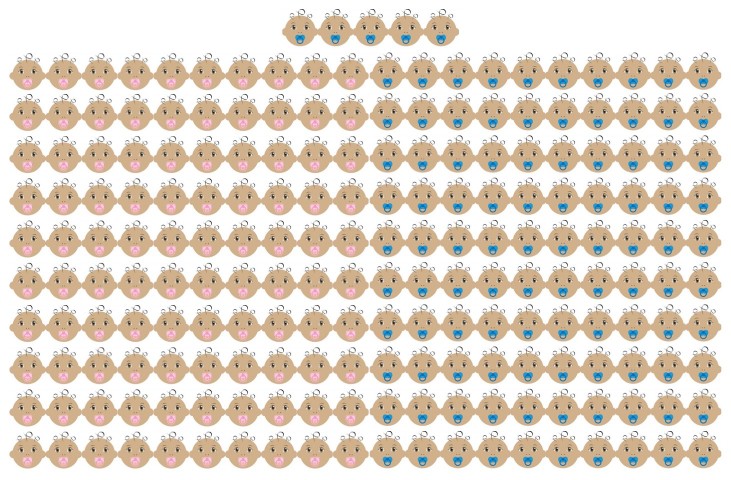
Around the world, records over the the past few hundred years have shown that sex ratios at birth have favored males. The occurrence is thought to be natural, a way to compensate for men’s higher mortality rates as compared to women. But lately the gender gap has been increasing even further.
According to the Pew Research Center in the US, historically there have been about 105 boys born for every 100 girls. However, the World Bank’s 2011 data shows that global sex ratio at birth is now 107 boys born for every 100 girls.
The main reason for the widening of this gap can be attributed to China, where there are 118 boys born for every 100 girls. That’s not to say that skewed gender ratios aren’t found elsewhere. Though China may be the biggest contributor, accounting for 12% of births worldwide, above average numbers of male babies occur in several countries through Asia and the Caucasus.
According to the World Bank’s data, Azerbaijan, Armenia, Georgia, South Korea, and the Solomon Islands have the next highest sex ratios. India comes in at seventh place with 108 boys for every 100 girls. Also in the same position are Macedonia, Montenegro, Papua New Guinea, Samoa, Serbia and Suriname.
While the international convention is to express sex ratios as males/females or males/females x 100, the Indian government expresses it in terms of number of females per 1000 males. Therefore the World Bank’s sex ratio of 108 for India in Indian terms is 926 females per 1000 males. The Indian government’s data on the birth ratio paints a far grimmer picture. A 2013 Hindustan Times article cited an unnamed government report that said the sex ratio had fallen to 893 in 2009. In International terms, that is 112 males per 100 females.
However, girls aren’t so highly outnumbered everywhere. While boys still have the upper hand, some places have a much more balanced sex ratio. The countries, centered in sub-Saharan Africa, with the lowest sex ratios include Rwanda, Sierra Leone, Togo, Zimbabwe, Ivory Coast and Madagascar.
The most likely explanation for these differences in ratios points to sex-selective abortion. The preference for male children in Asia is well documented and is believed to play a large role in the high share of male births in countries in these regions.
In addition to sex selection, there are other biological factors affecting the sex ratio as well. For instance, research implies that older parents are less likely to give birth to a male child, and that the higher number of girls being born in Sub-Saharan Africa could be linked to the practice of polygamy (multiple wives). In both cases the common factor seems to be less frequent intercourse.
Studies also show that the number of baby boys increase during and after wartime. The frequency of intercourse again seems a likely reason. But in other cases, wartime is linked to a higher number of female babies. In that case the reason could be maternal stress which leads to an increased risk of miscarriage, which is more likely to occur with male fetuses.
Share your thoughts. Please like FamiLife’s page on Facebook so that you get all our articles and others may find us.
